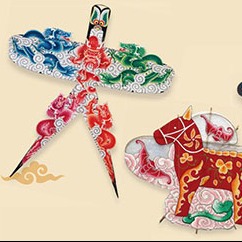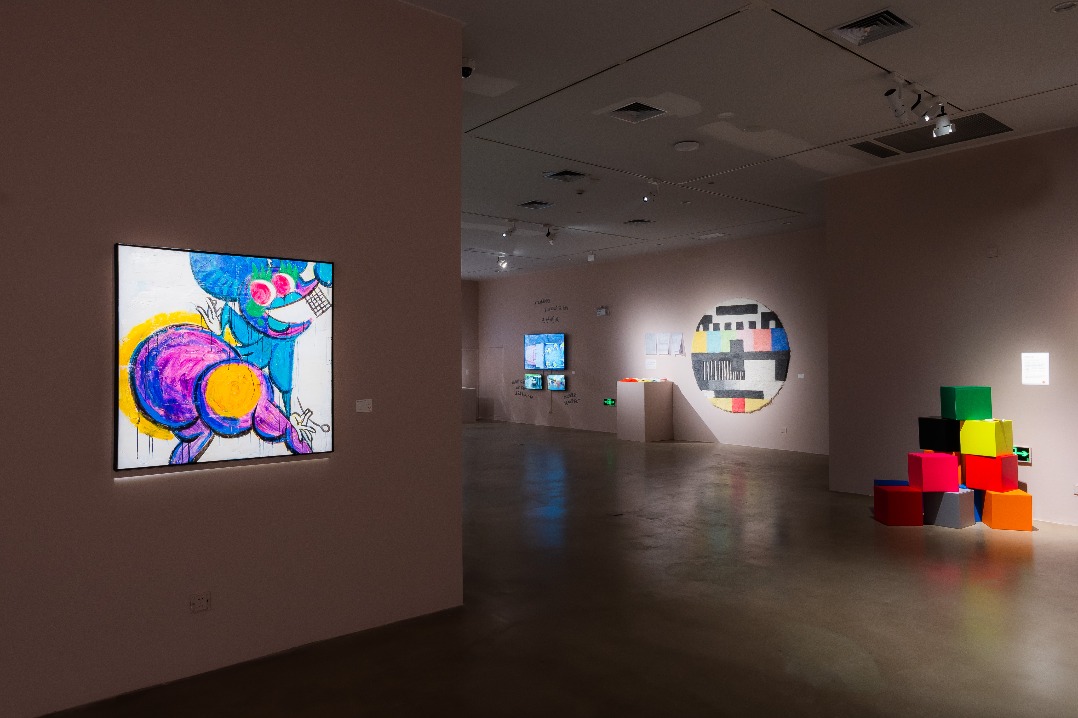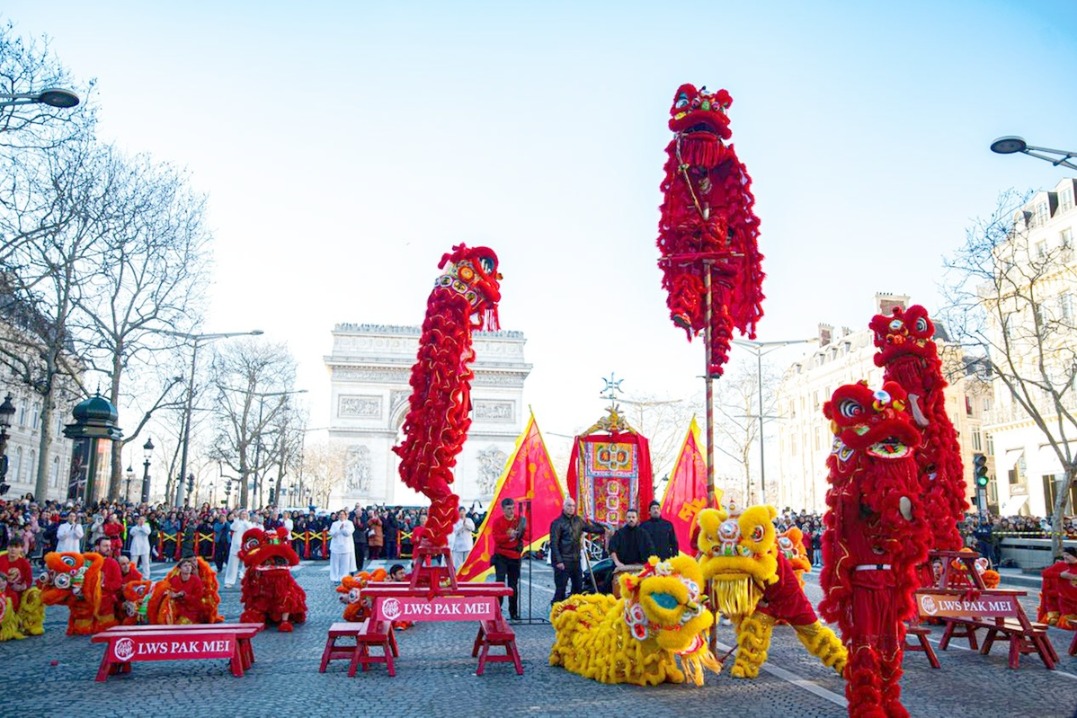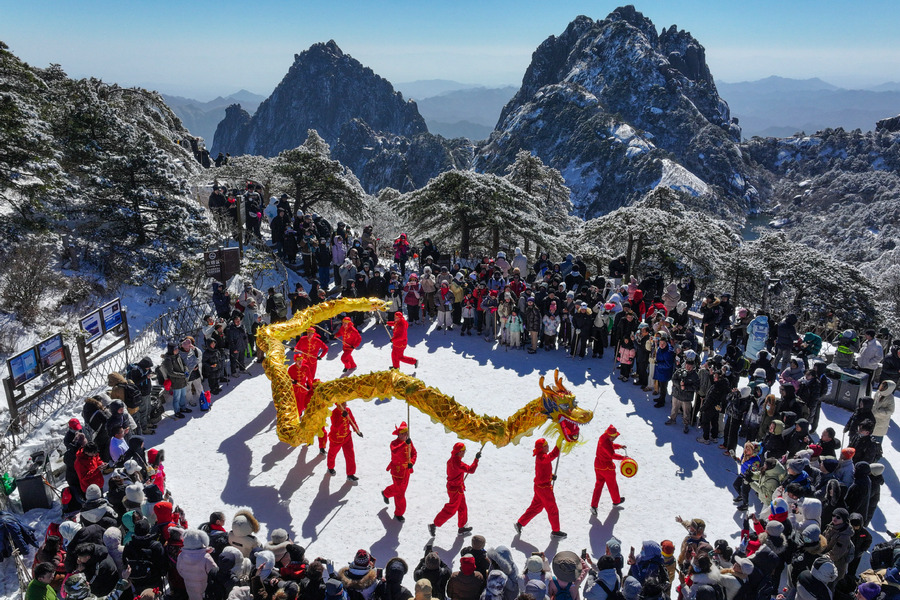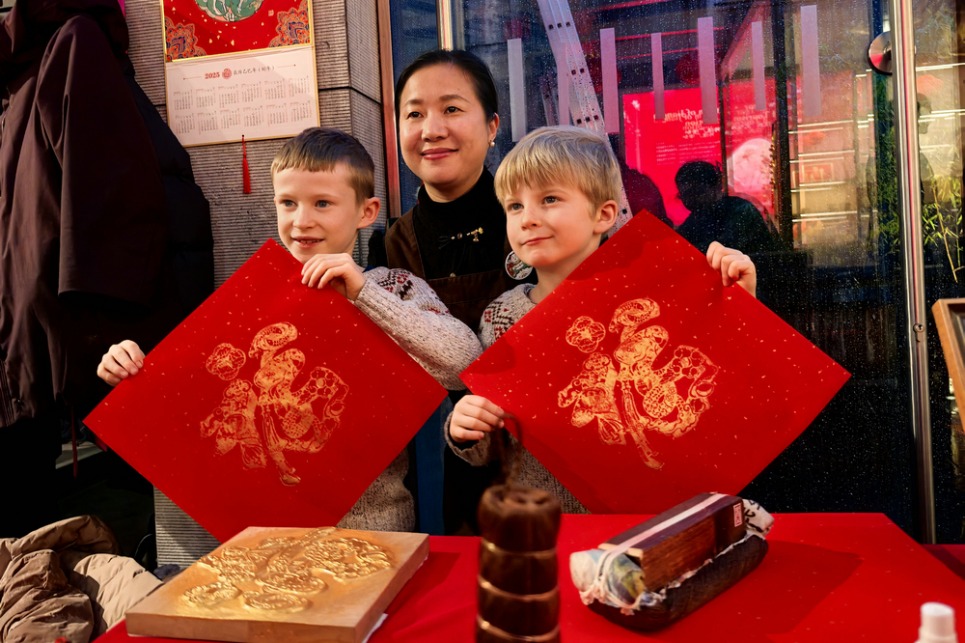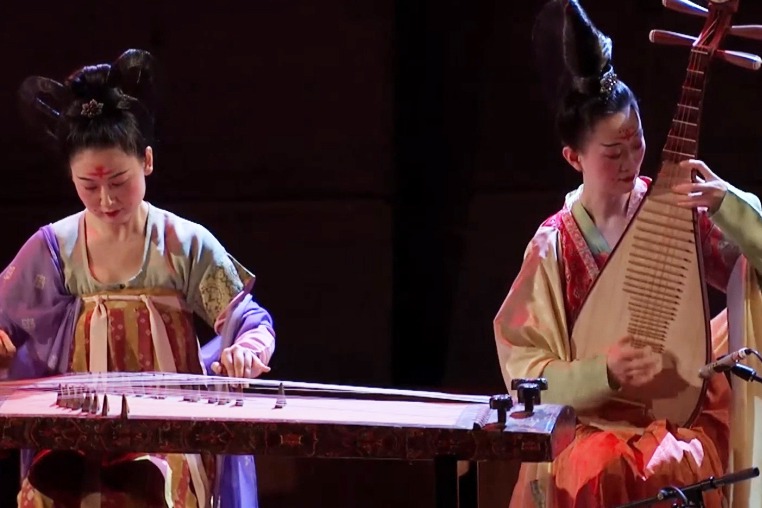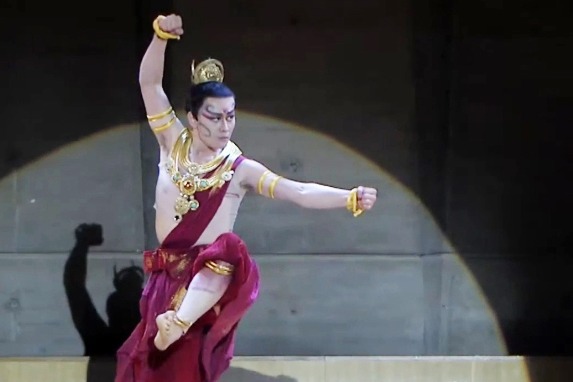Sharing their love of culture
Artists, dancers, and artisans join New Year tour to share traditional culture with a global audience, Zhang Zhouxiang reports.

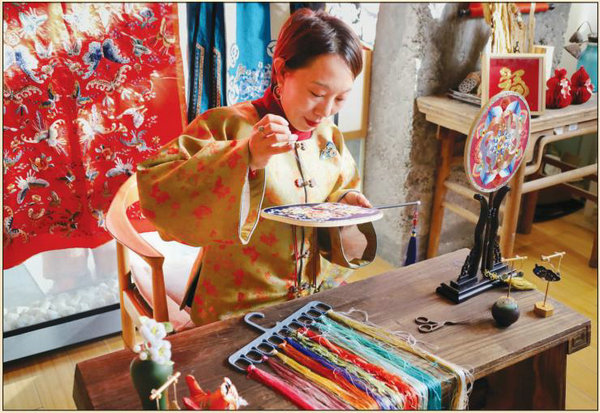
Golden threads dance between silver needles, threading vitality into the intricate snake-pattern embroidered fan in the warm sunlight in winter.
As the vibrant colors bring the snake to life, Liu Xiaoyan, an embroidery master, weaves her heartfelt wishes for a prosperous Year of the Snake with each stitch.
Liu was demonstrating her craft in a fun park in Greece on Jan 19, which is part of a cultural trip she and her team are on, called "Happy Spring Festival "organized by the Beijing Overseas Cultural Exchange Center to spread Chinese culture to the countries they travel to.
The cultural celebration is an annual activity held since 2016 to celebrate the Chinese New Year with Chinese community in other countries as well as other local people wanting to discover more about Chinese traditional culture. This year's activity included a series of events in Greece, Italy, Sweden, Norway, Finland, Estonia, Turkiye, and Nigeria.
In her display table, Liu presented over 40 exquisite and captivating embroidery pieces, ranging from garments and scrolls to smaller items such as brooches and earrings to display the enchantment of Chinese aesthetics. Passersby couldn't help but stop and admire the works, with some excitedly trying their hands at creating their own embroidered fans.
"We are happy for this," said Nadia, a local woman who watched Liu's performance in Athens, "The Chinese community in Athens is really vibrant and strong, and I hope you're going to be healthy and happy throughout the Year of the Snake."
"My heartfelt thanks to you — both the artistic works and the food are amazing," said a local man named Vassili, who was happy watching Liu's performance and expressed his "Happy the Year of the Snake" congratulations to all.
What Liu displayed at the exhibition is the art of Beijing embroidery, recognized as an intangible cultural heritage of the nation, to which she is inheritor and master of arts and crafts in Beijing. Liu's family has had a long connection with the world of tailoring as four generations of her family worked as tailors, which brought her an early exposure to the craft of embroidery and naturally sparked her interest in Beijing embroidery, a form of classical Chinese royal embroidery that dates back to the Tang Dynasty (618-907).
Characterized by exquisite details and auspicious patterns, the demanding techniques of Beijing embroidery are a time-consuming challenge. "It took me three months to embroider just one peony leaf at my first attempt," Liu recalled.
The skills needed to become an exceptional embroiderer, however, were not the only lessons Liu learned from several masters of Beijing embroidery over the course of 17 years.
"My teachers always advised me not to limit myself to the needle and thread," Liu recalled. "Instead, they encouraged me to think about how I could carry the essence of Chinese traditional culture into the modern era, ensuring this form of national intangible cultural heritage would continue to thrive."
In addition to mixing the popular snake motif for the New Year into embroidery works, such as fans, brooches, and earrings, Liu also experimented with traditional colors and techniques to convey grand messages of the times through these small pieces.
Hitting new heights
"Turquoise and lapis green are commonly used in traditional Chinese painting. With these two colors in this mountain-shaped brooch, I hope to convey our current pursuit of a better life and a cleaner environment," Liu said, pointing to the brooch she was wearing.
From Jan 18 to 28, during the "Happy Spring Festival" trip, Liu showcased her works in Greece and Italy. "For me, it's not only an opportunity to show Chinese traditional culture, but also a way to inspire me to keep this intangible cultural heritage alive by learning the tastes of global audiences and the methods of my global counterparts," Liu said.
Organized jointly by the Beijing Municipal Bureau of Culture and Tourism and local Chinese embassies, consulates and cultural centers, among other institutions, the "Happy Spring Festival" events feature a diverse array of activities such as display of Liu's embroidery products, interactive activities with local audiences, Chinese New Year photo exhibitions, exhibitions of award-winning entries from the Global Zodiac Design Competition, and VR exhibitions of Beijing's Central Axis that was recognized as a UNESCO World Heritage Site in 2024, all showcasing the rich connotations of Chinese New Year culture.
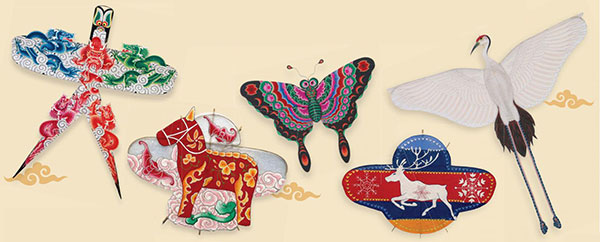
Another of the intangible cultural heritage practitioners taking part is Ha Xin, a fifth-generation inheritor of kite-making skills named after his family name, which, with a history of over 160 years, was included on the national intangible cultural heritage list in 2008. While all ordinary kite-making procedures are similar and involve making the different parts of the skeleton of the kite with bamboo, then gluing them together and covering the framework with paper, Ha's kites are uniquely artistic as he invests a lot of time and energy into the drawing and design.
For Ha, drawing is the gene of the kites he makes and he usually spends over 20 days drawing on a kite. His grandfather, the third-generation inheritor of the art, once said: "A kite might last only about 100 years but the drawing and design on it might exist much longer."
Ha's drawings on the kite include birds, butterflies, goldfish and dragons. This time he has creatively designed kites with drawings of Dala horses in Sweden and moose of Norway, to convey China's friendliness to the people of Scandinavian countries, which are his trip destinations.
To make it interactive, Ha has also halfmade a large dragon kite and invited local audiences to participate in finishing the kite on-site. "By allowing locals to do it together, I hope they can enjoy the process and gain a love for the Chinese art of kites."
Expressive dance
The Beijing Dance Academy also participated in this year's activity. Zeng Ming, a teacher in its Department of Chinese Classical Dance, led a group of seven dancers to perform in Nigeria and Turkiye, showcasing the beauty of Chinese classical dance.
Among the performances was Zeng's solo dance titled Calligraphy and Painting. This piece is a fusion of two traditional Chinese art forms — calligraphy and classical dance. In the performance, Zeng held a calligraphy brush throughout, using the movements of writing as a form of expressive dance.
The dance reflects the passion and flowing strokes of Chinese calligraphy. As the music progresses, the rhythm of the dance grows more intense, akin to the moment when ancient Chinese literati moved their brushes vigorously to express their inner passion with strokes powerful enough to penetrate the paper.
Calligraphy and Painting is not only a celebration of Chinese calligraphy but also a vivid portrayal of the artistry and philosophy behind it, according to Zeng. By integrating the fluid motions of calligraphy with dynamic dance steps, Zeng's performance embodies the harmony of body, mind, and spirit.
The dance accentuates the elegance and intricate beauty of Chinese calligraphy, while also conveying its deep cultural significance, reflecting the Chinese literati spirit and profound historical roots of Chinese tradition.
Through the performance, Zeng and his fellow dancers brought Chinese culture to international audiences, demonstrating how Chinese classical dance and calligraphy can transcend cultural boundaries and resonate with people worldwide. There are also dances in which the dancers manipulate long silk ribbons to resemble snake, through which they hope to wish the audiences a happy Year of the Snake.
"I believe that in this overseas performance, we represent our country and demonstrate the grandeur and broadmindedness of China as a nation of etiquette," Zeng said, "We want the audiences to see the spirit of the Chinese people and feel the depth of Chinese culture."
Lu Tianyue and Wan Zhuoran contributed to this story.


